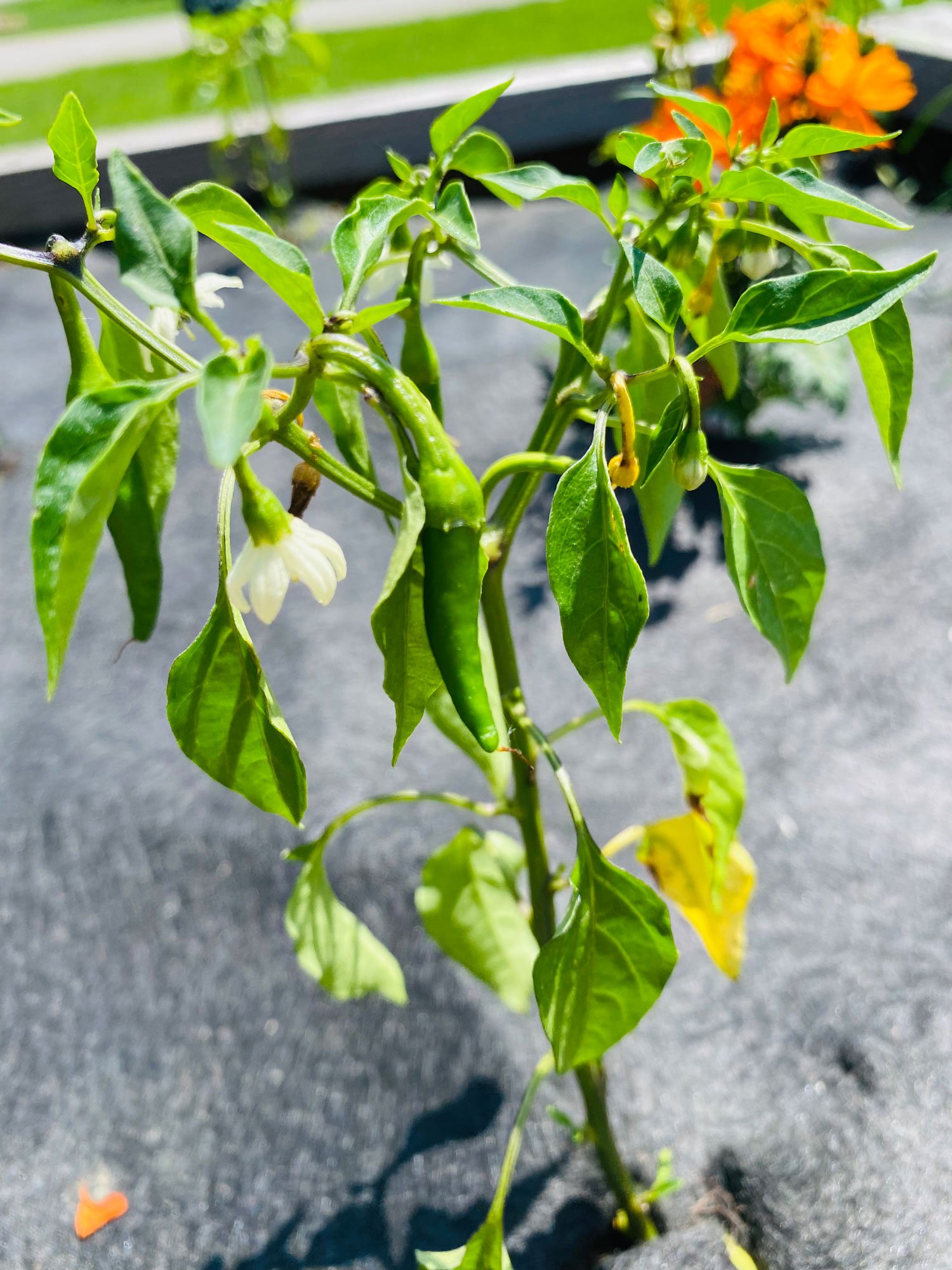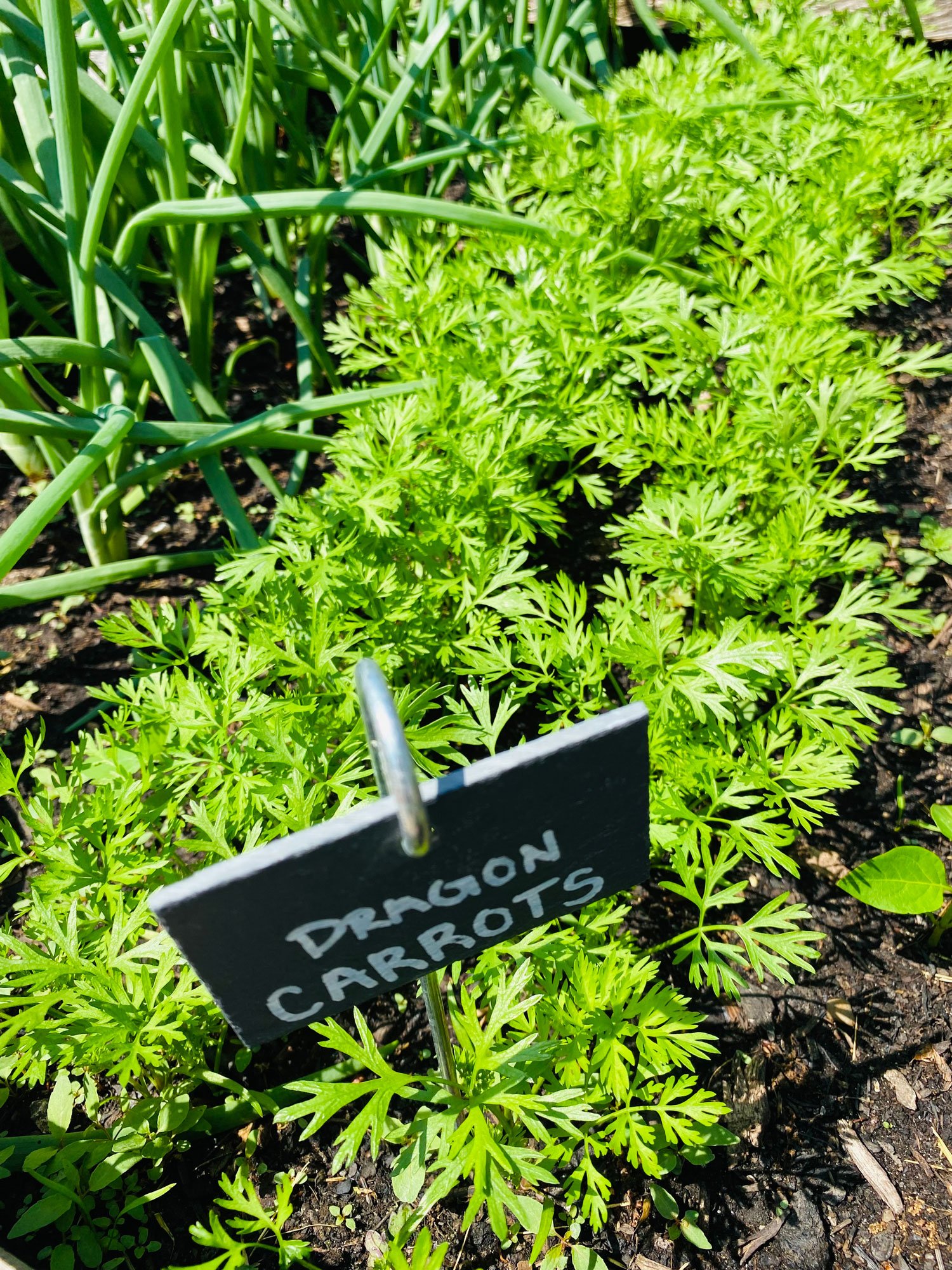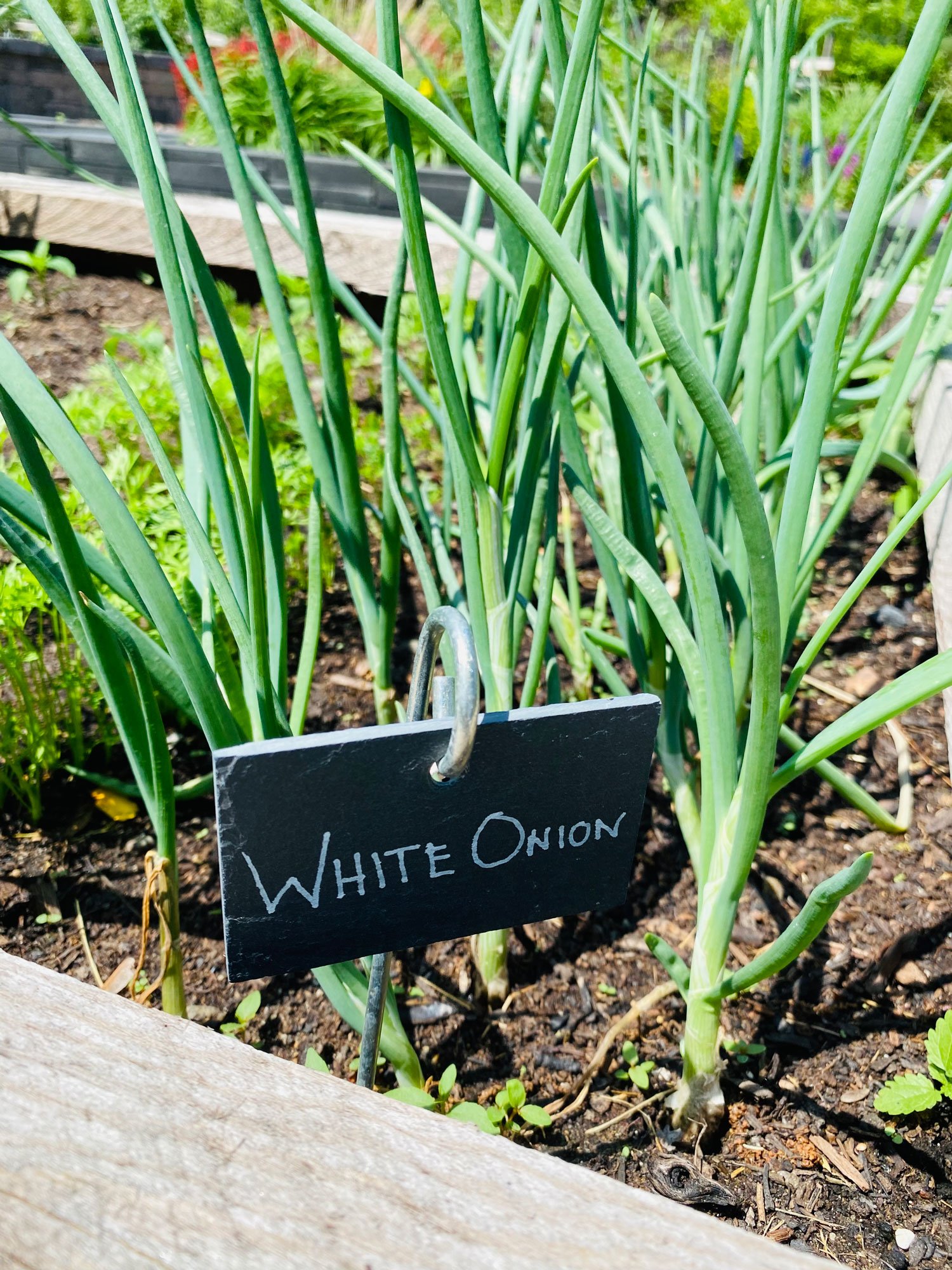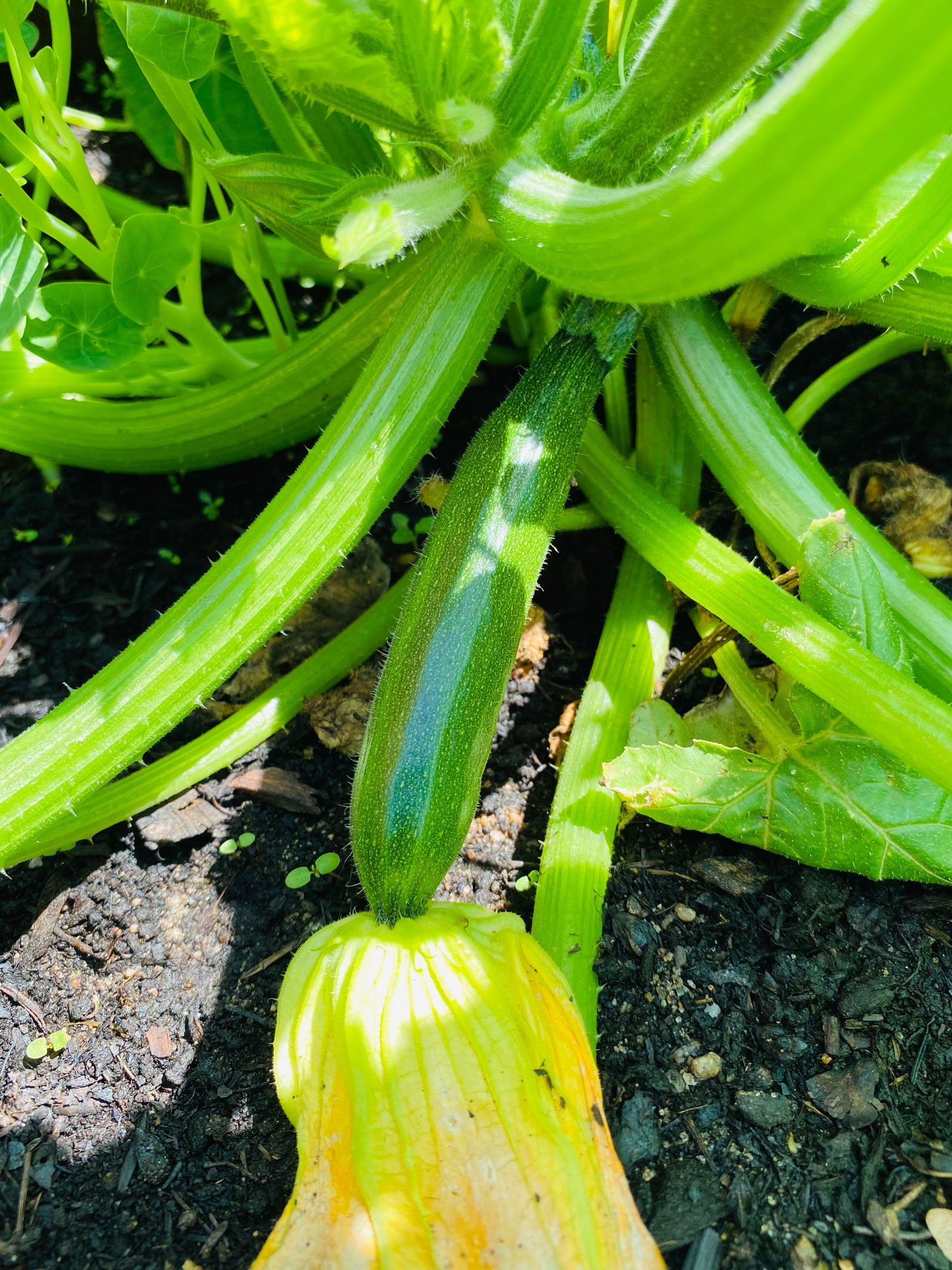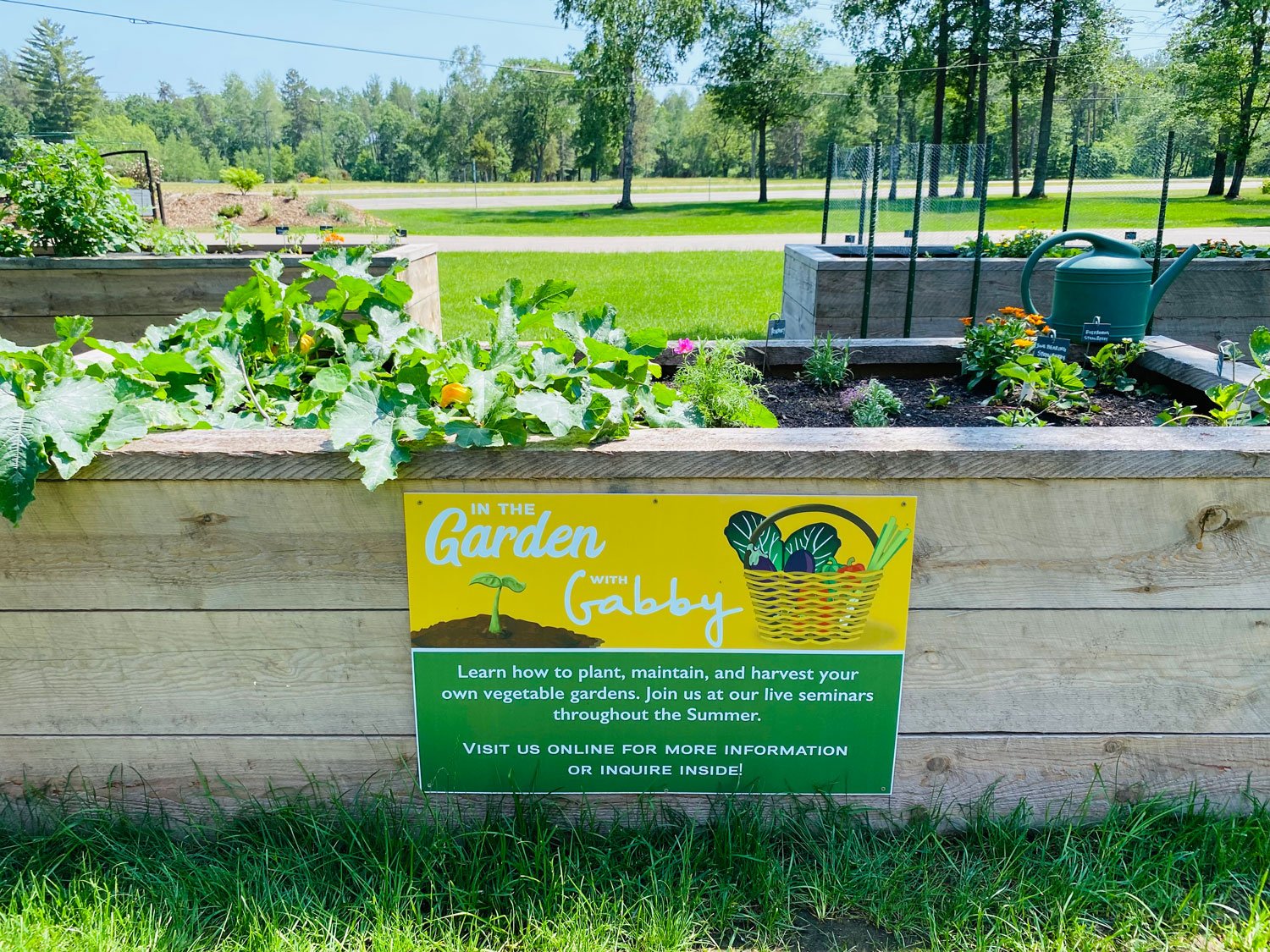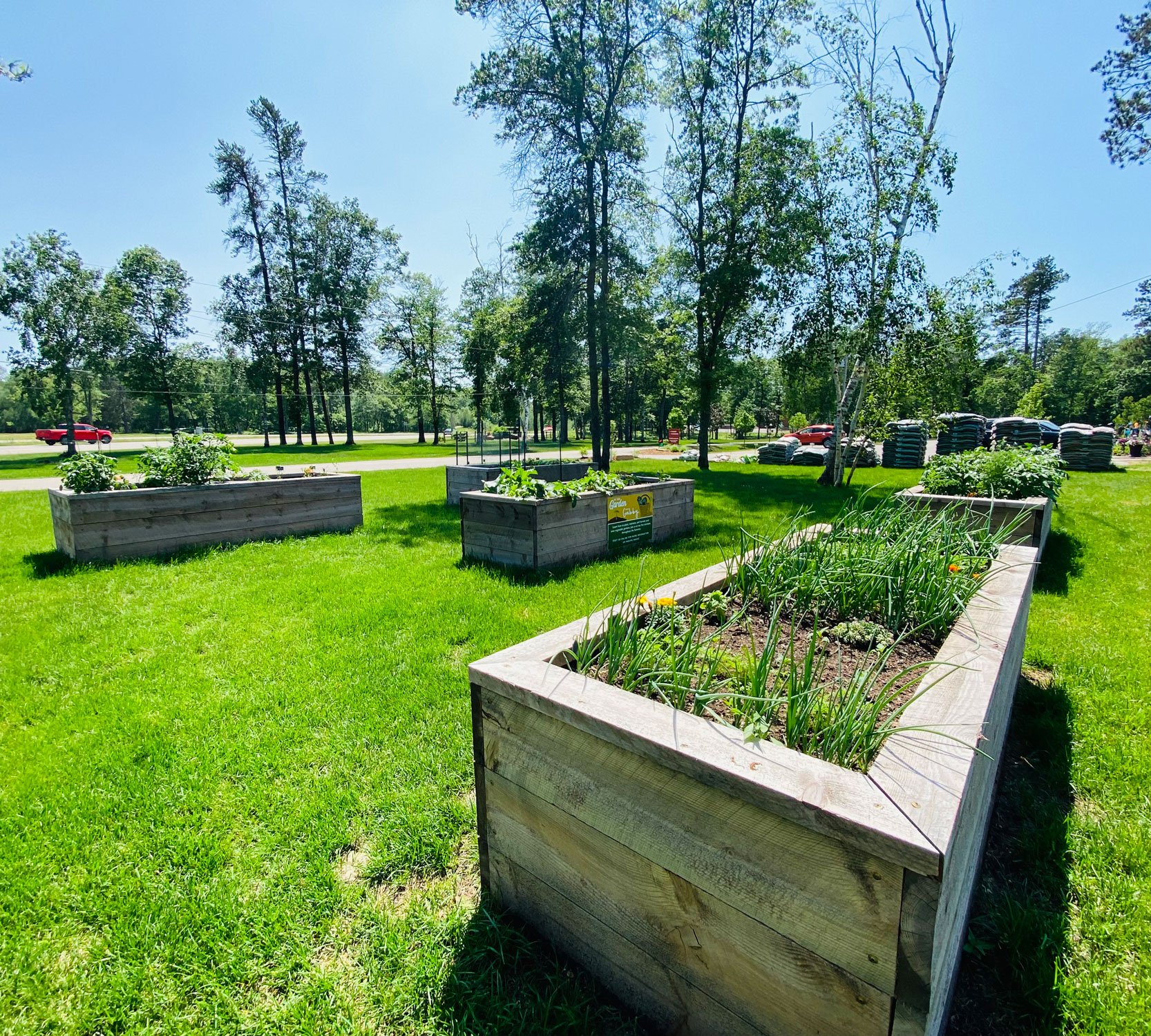Companion Planting: Copper Creek's Raised Garden Beds and What Vegetables Work Best Together
It has been an exciting kick-off to the growing season here at Copper Creek! New this year, we are offering a free learning seminar for all you need to know in the vegetable garden. These monthly courses will be taking place at our very own raised garden beds in front of the greenhouse! Our ongoing summer course, ‘In the Garden with Gabby’, goes over categories such as planting vegetables from seeds and started plants, companion planting, pests and diseases to be aware of, biological controls, watering and fertilizing tips, all the way to harvesting the vegetable garden. Currently, we have 5 raised garden beds located in front of the main entrance to the Garden Center. Each of these raised beds have been strategically planted in a way that benefits the plants within, this is known as ‘companion planting’. There are also some plant combinations that should be avoided, which is also part of the strategy we used in our raised garden beds. We are excited to teach you all about our tactics to help you get the best production out of your garden, big or small! Today, we are going to share with you what we have planted in each of our garden beds and the reasons they are planted that way.
Before we get into each of the vegetable garden beds, let’s make note of a few commodities each have. Almost every bed has vegetables, flowers, and herbs. The flowers we chose to use include calendula, marigolds, zinnia, nasturtium, and alyssum due to their excellent beneficial capabilities. To see more flowers that are great in the vegetable garden click here. Flowers in the garden can have multiple purposes. They can act as a trap crop. This means that some harmful insects, such as aphids and thrips, are more attracted to that “trap crop” plant than they are to your precious vegetables. Flowers also attract our pollinating insects, such as butterflies, bees, and so many more. Remember, without good pollination, your crop will be much less transfer pollen from one plant to next. This provides a bountiful harvest, as most vegetables need the act of pollination for vegetables to grow. Certain flowers can also help repel harmful insects that certain vegetables are susceptible to. Flowers such as alyssum can help keep weeds down by their large cover and spread of small blooms and foliage on top of the soil. Herbs are another great placement in the garden for both harvesting and for companion planting. Herbs are known to attract beneficial insects, while also working as a repellent for unwanted pests. Incorporate herbs to improve your growth and harvest in the vegetable garden.
Garden Bed #1: Red Potato, Yukon Gold Potato, Russet Potato, Kale Starbor, Cilantro, Oregano, Thyme, Marigolds, Zinnia
In our first vegetable garden bed you will see that we have our 4 rows of potatoes. In between the rows of potatoes, we have marigolds. Marigolds are the perfect flower to be placed in between or near potatoes because they attract ladybugs, lacewings, and hoverflies. These insects consume the larvae of potato bugs. This keeps the infestation of potato bugs very low if at all. The root profiles of the plants in this bed are a good mix of deep and shallow roots. It is good to have a mix of root lengths within the vegetable garden. This way the plants won’t compete for nutrients and soil moisture. Potatoes have deeper, fibrous roots that grow down and outward, usually growing about 2 feet. Herbs typically have more shallow roots, with only a couple of inches. Kale is in the middle with roots that sit down about 1 foot. Kales roots grow horizontally as well. Be sure to give enough space in between plants when planting kale. For our herb portion in this garden bed, we have cilantro, oregano, and thyme. These are considered your Mediterranean herbs. These herbs love lots of sunlight and generally prefer drier soil. Other herbs that would be great in this bed would be rosemary, sage, chives, dill, and lavender. In between our herbs we have zinnia as our flower. Because our Mediterranean herbs love sun so much, we pick zinnias because they grow tall without shading your herbs. Zinnias are also great near your herbs because they are drought tolerant and match the preference of the drier soil when it comes to your Mediterranean herbs.
Garden Bed #2: Sweet Onion, Dragon Carrot, Pepper, Yellow Onion, Red Onion, Red Cored Carrot, White Onion, Marigold, Sweet Alyssum, and Basil
In vegetable garden bed #2 we have 4 rows of onions. There is one row on the left side, two in the middle, and two rows on the right. Onions are known to have a hard time sucking in moisture. For this reason, its best to spread the rows across the garden bed so other plants can help keep the onions moist. Onions are a huge benefit to the vegetable garden as they repel nasty pests such as aphids, slugs, and cabbage worms. We also have 2 rows of carrots on either side of the garden bed and peppers next to the carrots. Onions are a fantastic companion when it comes to peppers as they are known to repel these unwanted pests. Carrots planted around peppers helps shade out weeds. Basil is perfect for this garden bed as it is said that planting basil next peppers enhances the peppers flavor. Naturally, Basil repels aphids, thrips, mosquitos, flies, and spider mites. We’ve also place Sweet Alyssum near the peppers. Alyssum attracts a realm of beneficial insects such as lady bugs and lacewings. Lady bugs and lacewings do some damage control by feeding on unwanted pests such as aphids, white flies, and thrips. Alyssum is a hardy plant that also adds some beauty to your garden. We also have planted our marigolds again near the onions and carrots. Planting marigolds next to carrots is said to increase the carotenoid contents and sugar content, while also contributing to damage control with unwanted pest on the other side of the garden bed.
Garden Bed #3: Fragaria Strawberry, Everbearing Strawberry, Honeoye Strawberry, Zucchini, Nasturtium, Rosemary, Zinnia, Calendula, Cosmo
In the third vegetable garden bed, we have our strawberries on the left of the bed and zucchini on the right. The strawberries and zucchini are separated in the middle by zinnia, cosmos, sweet alyssum, and nasturtium. The nasturtium is planted next to the zucchini because it helps to keep the zucchini roots cool. Nasturtium wards off several plant diseases. It also attracts aphids away from your vegetable plants. Use Nasturtium to trap insects such as whiteflies, squash bugs, and cabbage worms. Zucchini leaves are very susceptible to foliar diseases caused by overwatering. Nasturtium also helps to keep soil moist with less overhead watering. Strawberries can attract unwanted slugs. Planting rosemary next to the strawberries can repel slugs. Rosemary also helps to attract beneficial insects.
Garden Bed #4: Cucumber, A&C Cucumber, Kentucky Pole Bean, Provider Bean, Detroit Dwarf Red Beet. Early Scarlet Globe Radish, Green Arrow Peas. British Wonder Peas, Calendula, Zinnia
In the vegetable garden #4 from left to right we have our cucumbers and beans with calendula between them. Continuing with zinnia, beats, radishes, and 3 rows of peas. Because the peas, pole beans, and cucumbers we have planted are vine plants, we have placed trellises for them to grow on. Keeping vining plants together is best so you can utilize your space and trellises more efficiently. These three plants also have similar growing habits which makes it more suitable for them to be planted near one another. Your peas will grow slow, and your radishes will grow faster, intermixing allows radishes to grow and be undisturbed. Because radishes are faster growers, this will help to break up the soil making for good aeration for the rest of your garden bed. Peas are considered a ‘legume’. A legume is the form of releasing seeds by splitting open. Legume vegetables are known to contribute to healthier soil by a process call nitrogen fixation. The beans compensate this by fixing nitrogen levels that are too high. You’ll want to take special caution when using fertilizers in this area. As they may not need it. We have our beats and radishes in the middle of the garden bed between the vining plants. We have sectioned off either side of the garden bed for our vining plants, so our trellises don’t get overwhelmed. Beets pair nicely when planted next to radishes. Your radishes will grow quite a bit faster than your beets. You will more than likely get a second harvest of radishes. We’ve planted calendula next to our cucumbers as a trap crop to keep unwanted insects and pests away from our cucumbers and pole beans. We’ve planted zinnia between our pole beans and our beets. Zinnias placed here will help to attract pollinators while also growing tall next to our trellises, creating beautiful and balanced pops of color in the vegetable garden.
Garden Bed #5: Serano Pepper, Garlic Chives, Cayenne Pepper, Cosmos, Nadapeno Pepper, Tomato Black Krim, Gold Medal Tomato, Tomato Super Sweet 100, Burpee Big Boy Tomato, Sweet Basil, Basil Tony Scavo, Tomato Bush Champion, Celebrity Tomato, and Sweet Alyssum
Our last vegetable garden bed might just be our favorite! We like to call it our salsa garden! With several different kinds of tomatoes, peppers, and basil, this vegetable garden bed is perfect for harvesting vegetables to be made into your favorite salsas. We have all our peppers planted on the left side of the bed and all our tomatoes planted on the right. We’ve mixed in our garlic chives cosmos in with the peppers and cosmos and sweet alyssum in with the tomatoes. Peppers and tomatoes are great companions in the garden bed as they have the same kind of growing preferences. They need trellises to keep plants from falling over, along with needing a steady supply of water. Refrain from soaking the leaves of these plants. They prefer ground watering best. We’ve planted our basil with our tomatoes. Basil can help increase tomato yield while contributing to the tastiness of your tomatoes. Basil also repels flies and hornworms. Our sweet alyssum is also planted in with our tomatoes to attract bees. Tomato plants flower before producing the vegetable so attracting bees and other pollinators is a must when it comes tomatoes. In with the peppers, we’ve planted calendula to attract beneficial insects which reduces pests and increases pollination.
The process of companion planting is very beneficial to your vegetable garden. Creating a combination of vegetables, herbs, and flowers, along with being able to repel unwanted pests and attract beneficial insects will contribute to a healthy, more abundant vegetable garden. Take our garden beds as an example for how you can incorporate these different plants together to grow your own successful growing season in your vegetable gardens. Learn more with our Creating a Balanced Garden: Beneficial Bombshells to incorporate even more helpful tips and tricks in the garden!

